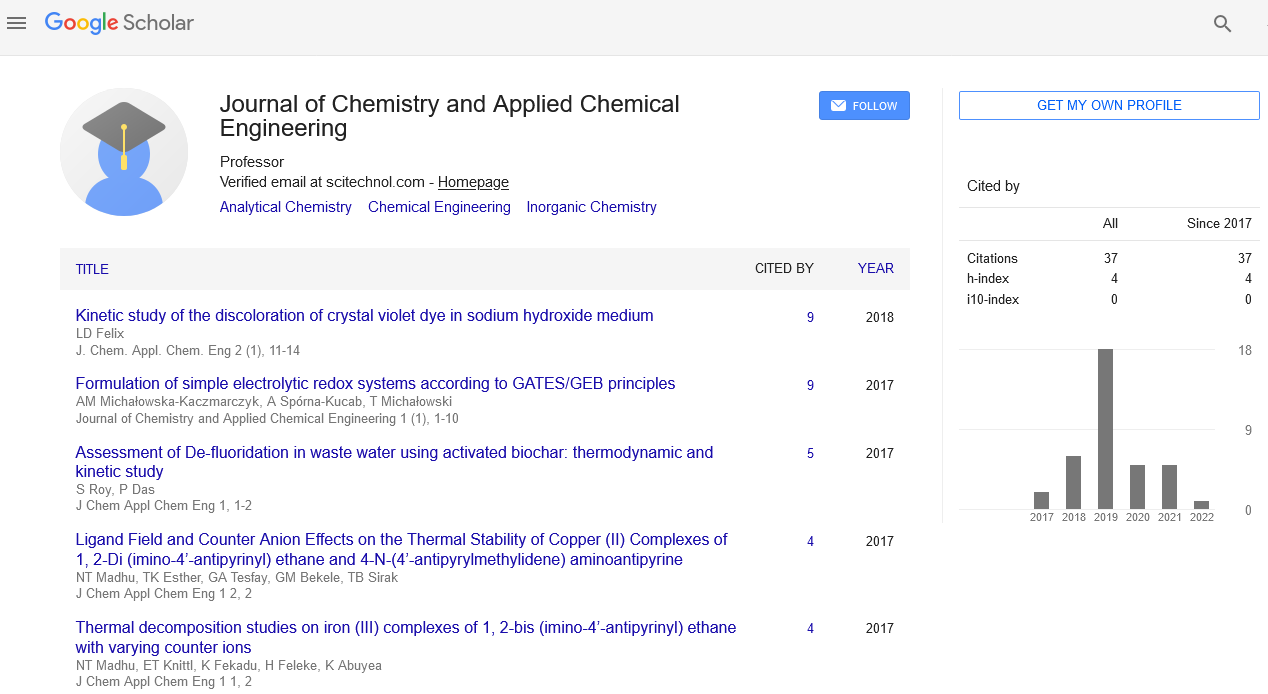Hierarchical hybrid biomimetic architecture for robust and reusable nanocatalysts
Sharmila M. Mukhopadhyay
University of Maine, USA
: J Chem Appl Chem Eng
Abstract
Nano-scale solids are known to offer unprecedented advantages related to surface interactions and quantum control, but their incorporation in deployable catalytic devices is limited by challenges of handling, storage and assembly combined with environmental proliferation risks. Natural living systems address these challenges through elegant multi-scale hierarchical architectures such as microvilli and dendrites, where a larger substrate is attached to progressively smaller catalytic entities. This type of architecture can offer exceptionally high levels of chemical and catalytic interaction in very compact space, but not common in conventional catalysis due to the complexities of creating primary bonds across components having different sizes, shapes and compositions to form a single continuous solid. In recent years, advances in nanoscience and surface engineering have made it possible for our team to fabricate these types of materials, which provide very significant advantages over conventional solids. This talk will provide insights into some of these materials designed, synthesized and tested in our laboratory, which show promise in advanced catalytic applications. Specific example will include palladium nanocatalysts anchored on carpet-like arrays of electrically and thermally conducting carbon nanotubes (CNT) covalently bonded to application-specific scaffolds such as rigid foams or flexible fabric. The nanotube carpets create 1000-10,000X increase in surface area, without any significant change in weight or volume. The hybrid catalytic materials have been characterized using scanning & transmission electron microscopy techniques (SEM and TEM), X-Ray Diffraction (XRD) and X-Ray Photoelectron Spectroscopy (XPS). They have also been tested for catalytic degradation of emerging environmental contaminants such as Triclosan, Atrazine and Trichloroethylene. Reaction kinetic rates was studied using HPLC and reaction pathways proposed based on LC-MS/GC-MS analyses. It was seen that, in presence of hydrogen, complete step-wise chlorine removal was seen in all cases, until complete dechlorination was accomplished. The pseudo-first order rate constants was found to be orders of magnitude higher than earlier reported values. Moreover, the same solid catalyst material was usable for multiple cycles in flowing liquid. This study demonstrates that the robustness and reusability of larger structural materials can be combined with surface advantages of nano-catalysts with this approach, in order to provide ecofriendly and cost-effective solutions for clean water technologies.
Biography
Dr. Sharmila Mukhopadhyay is Director of the Frontier Institute of Research in Sensor Technologies (FIRST) and Professor of Mechanical Engineering at University of Maine. Her recent research involves multifunctional nanomaterials and surface engineering strategies for energy, environment, and biomedical applications.
 Spanish
Spanish  Chinese
Chinese  Russian
Russian  German
German  French
French  Japanese
Japanese  Portuguese
Portuguese  Hindi
Hindi 